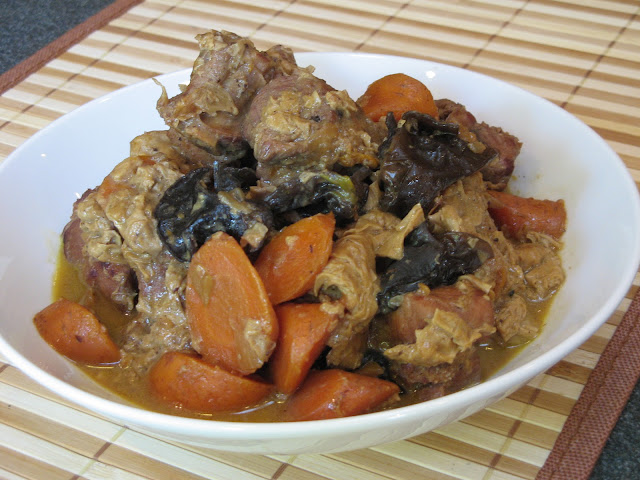This recipe was updated on 18 Aug 2015. Some instructions
and ingredient quantities were changed, and metric measurements added.
When I was a small child, I didn’t like fish. Now that I’m
and adult, it’s one of my favorites. Whenever my family gets together at a
Chinese restaurant, a steamed whole fish is almost always on the menu. Whenever
I prepare fish at home, a whole fish is usually too much (food), so I get a
fish tail, in this case a black bass. The advantage to getting a whole fish is
that you get the freshest fish (since you pick the fish from the tank to be
dispatched) and you get to eat the fish cheeks (the most delectable part),
while with the fish tail, the fish has already been dispatched and prepared
some time before. While the best tasting fish is “freshly dead” (for you Young Frankenstein fans), almost
“freshly dead” isn’t too bad. Regardless if the fish is whole or not, the
cooking technique is the same.
I’ve always steamed the fish and just left it in its juices,
but after looking at the Steamed
Fish Recipe at Rasa Malaysia, removing the fish from cooking juice before
serving is a better method. This also makes for a better presentation, since
you can steam the fish in one plate and then place it on a platter with freshly
cooked vegetables if you choose to do so. The recipe’s steaming time is for 8
minutes, which seems like a short amount of time since I’ve always steamed fish
for 15 minutes, but 8 minutes works great. Now I steam fish for 8 minutes.
The fish is always finished with heated oil and a soy sauce
mixture. You can use a small pot or a wok to heat the mixtures, but I’ve been using
the microwave to heat the soy sauce mixture. As always, you need to be very
careful when you pour heated oil and liquids on the fish, as the hot oil and
liquid will pop and splatter off the fish. Finally, the fish was placed on a
bed of baby bok choy. This is optional and while it does make for a good
presentation, you need to precook the baby bok choy before putting the steamed
fish on it. Again, I use the microwave to zap the baby bok choy on the
presentation plate.
Enjoy!






